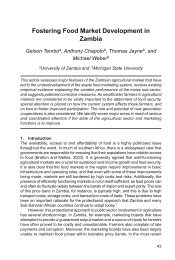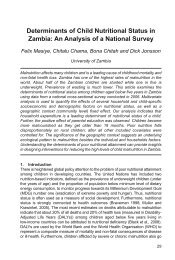Introduction to Basic Legal Citation - access-to-law home
Introduction to Basic Legal Citation - access-to-law home
Introduction to Basic Legal Citation - access-to-law home
You also want an ePaper? Increase the reach of your titles
YUMPU automatically turns print PDFs into web optimized ePapers that Google loves.
§ 2-200. How <strong>to</strong> Cite Judicial Opinions<br />
Contents | Index | Help | < | ><br />
In the U.S. legal system, judicial opinions are probably the most frequently cited category of<br />
legal material. The articulated grounds of past judicial decisions are, in many instances,<br />
binding precedent for currently litigated matters. Under other circumstances, they are<br />
"persuasive" authority. In either event, if on point, they should be cited. In the context of legal<br />
citation, judicial opinions are commonly referred <strong>to</strong> as "cases" and organized collections of<br />
opinions are called "<strong>law</strong> reports" or "case reports." Most cited "cases" are opinions of<br />
appellate courts; however, trial court rulings on questions of <strong>law</strong> do on occasion produce<br />
decisions <strong>law</strong>yers may wish <strong>to</strong> cite, despite their limited force as precedent.<br />
Prior <strong>to</strong> the era of electronic information dissemination, many courts that produced large<br />
numbers of legal opinions selected only a fraction of them for "publication" in <strong>law</strong> reports.<br />
The remaining "unpublished cases" were, as a practical matter, unavailable for citation. The<br />
appearance of online systems ready, even eager, <strong>to</strong> pick up and distribute "unpublished"<br />
decisions forced courts <strong>to</strong> be clearer about the status of decisions they view as merely<br />
involving the routine application of settled <strong>law</strong>. See § 2-250.<br />
Since the decisions of American courts generally deal with multiple issues and tend <strong>to</strong> be<br />
lengthy, recounting pre-litigation facts and procedural events of limited relevance <strong>to</strong> the<br />
points for which they might be cited, it is rarely enough simply <strong>to</strong> cite the case. Under most<br />
circumstances, a full case citation should include a reference <strong>to</strong> a specific portion or portions<br />
of the opinion. A reference that merely directs the reader <strong>to</strong> a decision of the U.S. Supreme<br />
Court and no more has a greater likelihood of frustrating than persuading. It is analogous <strong>to</strong><br />
route directions that identify the city or neighborhood but fail <strong>to</strong> furnish a complete street<br />
address.<br />
The relevant citation principles follow; section 3-200 provides both basic examples and<br />
sample case citations from all major U.S. jurisdictions.<br />
§ 2-210. Case <strong>Citation</strong>s – Most Common Form [BB|ALWD]<br />
§ 2-210(a) Examples<br />
– Czapinski v. St. Francis Hosp., Inc., 2000 WI 80, 236 Wis. 2d 316, 613 N.W.2d<br />
120.<br />
– Kootenai Envtl. Alliance, Inc. v. Panhandle Yacht Club, Inc., 671 P.2d 1085 (Idaho<br />
1983).<br />
Principle: The core of a case citation consists of four elements:<br />
Element (a) - The parties' names (often referred <strong>to</strong> as the "case name" or less frequently the<br />
"style" or "caption" of the case)<br />
• Names are italicized or underlined (§ 5-100)<br />
• and boiled down using an extensive set of omissions (§ 4-300) and abbreviations (§<br />
4-100),<br />
14




